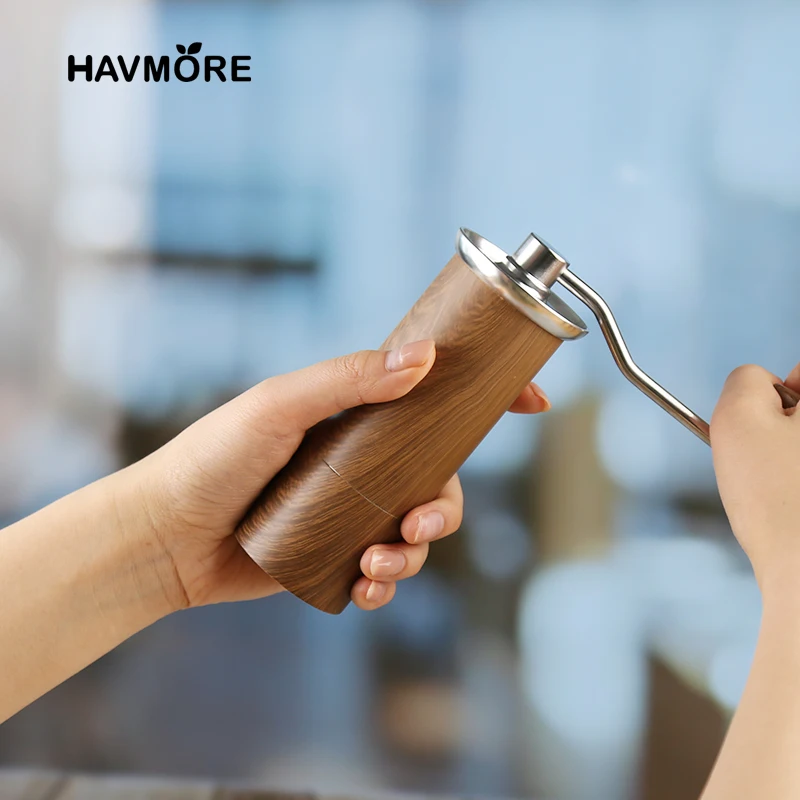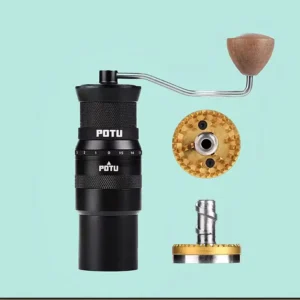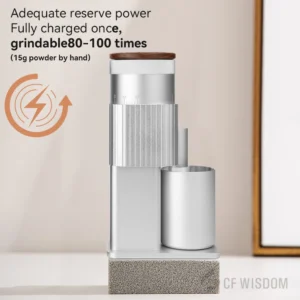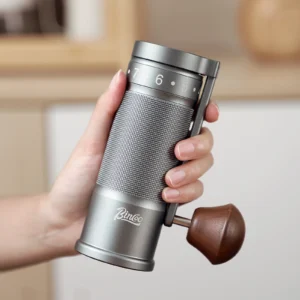The Foundation of Espresso Excellence: Why Grind Size Is the Ultimate Game-Changer
When it comes to creating exceptional espresso, many variables come into play: bean quality, water temperature, tamping pressure, and extraction time. However, among these factors, grind size stands as the supreme variable that can make or break your shot. This isn’t just coffee snobbery—it’s science.
The relationship between grind size and espresso quality is fundamental. When pressurized water (typically 9 bars) passes through compacted coffee grounds, it extracts soluble compounds that create the complex flavors we love. This extraction process depends critically on the size of coffee particles because particle size determines:
- Surface area exposure: Finer grounds have more surface area, allowing water to extract compounds more efficiently
- Flow resistance: The compacted coffee bed must create enough resistance for proper extraction pressure
- Extraction rate: How quickly soluble compounds move from coffee into water
When your grind size is incorrect, the extraction balance falls apart. Too fine, and water struggles to pass through, over-extracting the coffee and producing bitter, harsh flavors. Too coarse, and water rushes through with inadequate resistance, under-extracting and resulting in sour, weak espresso.
The precise espresso grind settings affect extraction in ways that no other variable can compensate for. Even the most expensive espresso machine with perfect temperature stability cannot salvage a shot made with improperly ground coffee.
Understanding this relationship explains why coffee professionals obsess over grinders as much as espresso machines. The ability to make minute, consistent adjustments to grind size is what separates good espresso from extraordinary espresso.
For home baristas looking to elevate their espresso game, investing in quality espresso coffee hand grinders capable of precise adjustments is often the most impactful upgrade you can make.
Defining the Ideal Espresso Grind: What Are We Aiming For?
The perfect espresso grind exists within a relatively narrow range, typically between 180 and 380 microns in particle size. But what does this actually look and feel like in practical terms?
Properly ground espresso coffee should have a distinctive texture that falls somewhere between table salt and powdered sugar—notably finer than regular drip coffee grounds. When rubbed between your fingers, it should feel like very fine sand with a somewhat powdery quality. The grounds will tend to clump naturally due to their small size and the oils present, especially in darker roasts.
However, the ideal size isn’t just about fineness—uniformity is equally crucial. A high-quality grind should have consistent particle size throughout. When particles vary significantly in size (known as having a wide “particle distribution”), smaller particles over-extract while larger ones under-extract, creating unbalanced flavors.
Here’s how espresso grind compares to other brewing methods:
| Brewing Method | Relative Size | Texture Comparison | Approximate Particle Size |
|---|---|---|---|
| Espresso | Very Fine | Fine sand/powder | 180-380 microns |
| Moka Pot | Fine | Table salt | 350-500 microns |
| Pour Over | Medium-Fine | Sugar | 500-700 microns |
| Drip Coffee | Medium | Sand | 700-900 microns |
| French Press | Coarse | Sea salt | 850-1100 microns |
It’s important to understand that the “perfect” grind isn’t universal. Various factors influence the ideal setting, including:
- Espresso machine pressure and type
- Coffee bean variety, origin, and roast level
- Desired flavor profile and extraction style
- Basket size and shape
- Dose weight
The concept of the ultimate espresso grind size is better understood as a starting point from which to fine-tune based on these variables. The ideal grind produces a balanced extraction where water passes through the coffee puck at just the right rate—not too fast (under-extraction) and not too slow (over-extraction).
Visual indicators can help identify proper espresso grind: when properly ground, espresso should extract with a honey-like consistency, developing from dark brown to lighter amber as the shot progresses. Determining the correct grind setting for espresso requires both knowledge and experimentation.
Essential Equipment for Espresso Grind Precision
Achieving the perfect espresso grind isn’t just about technique—it requires the right equipment. At the heart of this process is the grinder itself, and not all grinders are created equal when it comes to espresso preparation.
For espresso, a burr grinder is essential—this is non-negotiable. Unlike blade grinders that chop beans inconsistently, burr grinders crush beans between two abrasive surfaces (burrs) set at a precise distance from each other. This creates uniform particle size, which is crucial for even extraction. The comparison between burr and blade grinders reveals significant differences that directly impact espresso quality.
Key features that determine grind quality include:
Burr material: Ceramic burrs retain less heat but may be less durable, while steel burrs are typically more precise and durable but can generate more heat during grinding.
Burr size and type: Larger burrs generally provide more consistent results. Flat burrs produce very uniform particle size, while conical burrs create a bimodal distribution that some prefer for espresso.
Adjustment mechanism: Espresso requires extremely fine adjustments. The difference between a perfect shot and an undrinkable one might be just a tiny fraction of a millimeter in grind size.
Stepped vs. stepless adjustment: Stepped grinders have preset adjustment points, while stepless grinders allow infinite adjustments between settings. For espresso perfection, stepless adjustments offer superior precision.
Grind retention: Some grinders hold old grounds in the chamber or burrs, which can mix with fresh grounds and affect consistency between shots.
The ability to make micro-adjustments is particularly important for espresso. High-quality manual coffee burr grinders offer exceptional precision, often matching or exceeding the performance of electric grinders costing much more. Manual grinders have fewer moving parts, typically retain less ground coffee, and allow for very precise adjustments, making them excellent choices for espresso enthusiasts seeking maximum control.
While quality grinders represent a significant investment, they’re the critical link between good beans and great espresso. Even the finest espresso machine cannot overcome the limitations of a subpar grinder. For serious home baristas, prioritizing grinder quality over machine features often yields better results.
The Complete Dial-In Protocol: Finding Your Perfect Grind Setting
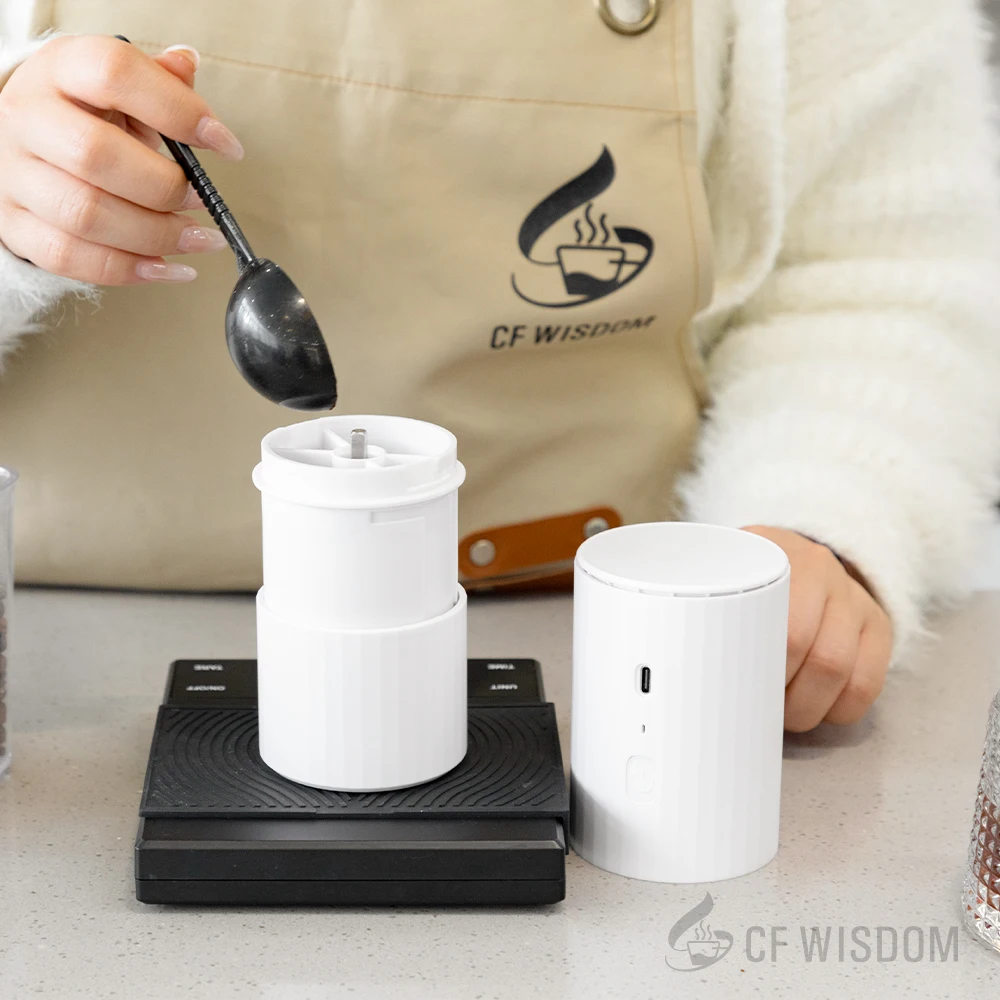
Dialing in your espresso grind is a methodical process that requires patience and attention to detail. The goal is to find the sweet spot where extraction time, flavor balance, and flow rate align perfectly. Here’s a systematic approach to achieving that perfect setting:
Step 1: Establish Your Baseline Variables
Before adjusting your grind, standardize other variables:
– Choose a consistent dose (typically 18g for a double shot)
– Target a 1:2 brew ratio (e.g., 18g coffee yields 36g espresso)
– Ensure consistent tamping pressure
– Verify your machine is properly heated
Step 2: Start with a Middle Setting
Begin with a moderately fine setting on your grinder. It’s better to start too coarse than too fine to avoid choking the machine.
Step 3: Pull Your First Shot and Observe
Pay attention to:
– Flow initiation: How many seconds before the first drops appear
– Flow development: How the stream develops (should transition from dark to honey-colored)
– Total shot time: Aim for 25-30 seconds from pump start to target yield
– Visual appearance: Look for a steady, consistent stream without sputtering or gushing
Step 4: Assess and Adjust
Based on your observations:
1. If the shot ran too quickly (under 20 seconds), adjust finer
2. If the shot ran too slowly (over 35 seconds) or barely dripped, adjust coarser
3. Make small, incremental adjustments—even quarter turns can significantly impact flow
Step 5: Purge Between Adjustments
After changing settings, grind and discard a small amount of coffee to clear any grounds retained from the previous setting.
Step 6: Repeat the Process
Pull another shot with the new setting and observe the results. Continue making incremental adjustments until you achieve the target extraction time.
Step 7: Taste and Fine-Tune
Once you’ve reached the target time range (25-30 seconds), taste the espresso and assess:
– If it tastes sour or weak, your grind is likely too coarse
– If it tastes bitter or harsh, your grind may be too fine
– If it tastes balanced with sweet complexity, you’ve found your setting
The process of mastering perfect espresso through grind adjustment is iterative. Document your settings and observations to build experience with different coffees and conditions. Remember that one single variable at a time should be changed—this methodical approach allows you to isolate the impact of grind adjustments.
With fine adjustment hand grinders, you can make precise incremental changes that help identify the optimal extraction point for your specific beans and equipment.
Reading the Shot: Interpreting Extraction Results for Grind Adjustments
Once you’re pulling shots, the real art of espresso preparation begins: interpreting what you see, taste, and measure to guide your grind adjustments. This diagnostic approach connects observable indicators to specific actions.
Visual Indicators
| Appearance | What It Means | Grind Adjustment |
|---|---|---|
| Watery, pale crema with large bubbles | Under-extraction | Adjust finer |
| Dark, thin stream with intermittent flow | Over-extraction | Adjust coarser |
| Blonding occurs very early (under 15 seconds) | Too coarse | Adjust finer |
| Shot appears black with minimal flow | Too fine | Adjust coarser |
| Tiger striping, reddish-brown crema with fine texture | Optimal extraction | Maintain setting |
| Channeling (spurting, uneven flow) | Distribution issue or too fine | Adjust slightly coarser and improve distribution |
Timing Indicators
| Shot Time | What It Means | Grind Adjustment |
|---|---|---|
| Under 20 seconds to reach yield | Too coarse | Adjust finer |
| Over 35 seconds to reach yield | Too fine | Adjust coarser |
| 25-30 seconds with proper flow development | Optimal range | Maintain setting |
Taste Indicators
| Flavor Profile | What It Means | Grind Adjustment |
|---|---|---|
| Sour, sharp, lacking sweetness | Under-extraction | Adjust finer |
| Bitter, astringent, hollow | Over-extraction | Adjust coarser |
| Sweet, balanced, complex | Optimal extraction | Maintain setting |
| Sour and bitter simultaneously | Channeling/uneven extraction | Improve distribution, consider slightly coarser |
Understanding the 30-second espresso rule provides a framework for evaluation, but taste should always be your ultimate guide. The perfect extraction time can vary based on bean type, roast level, and desired flavor profile.
When interpreting results, consider multiple indicators together rather than focusing on just one aspect. For example, a shot that runs for the “perfect” 28 seconds but tastes noticeably bitter likely needs a slightly coarser grind despite hitting the target time.
Remember that extraction is fundamentally about dissolving the right proportion of coffee compounds—approximately 18-22% of the coffee mass should end up in your cup for balanced flavor. Both under-extraction and over-extraction leave you with an imbalanced representation of the coffee’s potential.
As you gain experience, you’ll develop the ability to predict needed adjustments from observing the first few seconds of extraction. This skill develops through consistent practice and attentive observation of how your adjustments affect results.
Beyond the Basics: Advanced Grind Adjustment Techniques
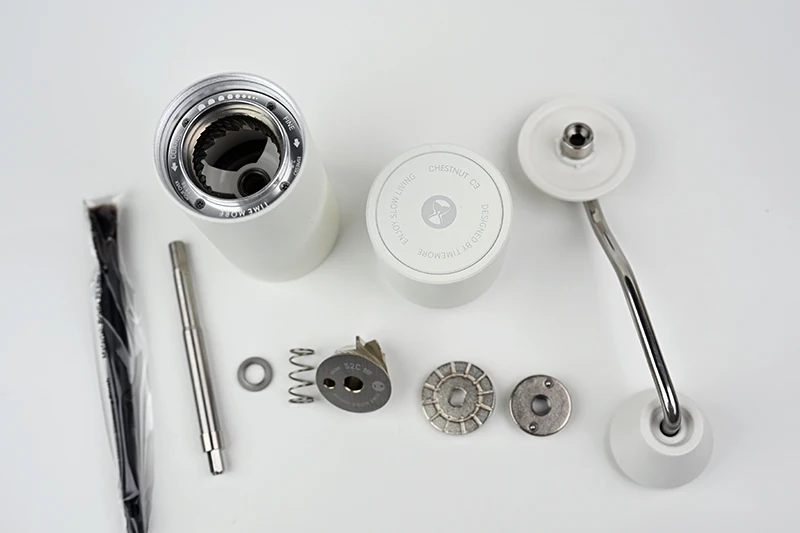
Once you’ve mastered the fundamentals of grind adjustment, several advanced techniques can elevate your espresso quality even further. These methods focus on extraction uniformity and flow dynamics—areas that significantly impact flavor complexity and balance.
Distribution Techniques to Complement Grinding
Even the most perfectly sized coffee particles can extract unevenly if they’re not evenly distributed in the portafilter. Advanced baristas use several methods to enhance particle distribution:
Weiss Distribution Technique (WDT): Using a fine tool (like a dissecting needle or specialized tool) to gently stir grounds in the portafilter, breaking up clumps and creating an even density throughout the coffee bed. This technique is particularly valuable when working with very fine espresso grinds that tend to clump.
Grooming tools: Devices that level the coffee bed before tamping, ensuring even depth throughout the puck. This prevents the formation of density gradients that can lead to channeling.
Puck Preparation Refinements
Ramping tamp pressure: Gradually increasing pressure during tamping to create a slightly denser bottom layer that helps regulate flow at the start of extraction.
Varied pre-infusion times: Adjusting low-pressure pre-infusion based on grind fineness—finer grinds often benefit from longer pre-infusion to ensure even saturation.
Flavor Profiling Through Grind Manipulation
Advanced baristas use grind adjustments to target specific flavor attributes:
Enhancing acidity: Slightly coarser grinds (while maintaining adequate extraction time through dose adjustment) can highlight bright, vibrant notes in light-roasted coffees.
Maximizing sweetness: Finding the precise grind setting that extracts caramelized sugars without pulling in excessive bitter compounds.
Balancing complex coffees: Using grind adjustments to harmonize competing flavor elements in complex single-origin espressos.
Pressure Profiling Considerations
For those with advanced machines offering pressure profiling:
- Declining pressure profiles often work best with slightly finer grinds
- Rising pressure profiles may require slightly coarser grinds
- Flat pressure profiles at lower than 9 bars typically need finer grinds than traditional 9-bar extractions
Using precision manual grinders gives you the control needed for these advanced techniques. High-quality manual grinders offer exceptional adjustment precision that can be difficult to achieve with stepped electric grinders.
The relationship between mastering espresso grind texture and extraction becomes increasingly nuanced at this advanced level. With experience, you’ll develop an intuitive sense for how subtle grind adjustments affect mouthfeel and flavor development throughout the extraction process.
Adapting Your Grind: Bean Variables That Demand Adjustments
Even after you’ve mastered your grinder and dialed in the perfect shot, coffee beans themselves introduce variables that require ongoing grind adjustments. Understanding how different bean characteristics affect optimal grind settings allows you to adapt quickly and maintain extraction quality.
Roast Level
Roast level significantly impacts the solubility of coffee and therefore the ideal grind size:
Light roasts are more dense and less soluble, generally requiring a finer grind to achieve proper extraction. Their cellular structure remains more intact, making it harder for water to extract compounds.
Dark roasts are more brittle, less dense, and more soluble, typically needing a coarser grind. Their cellular structure has broken down more during roasting, allowing water to extract compounds more easily.
Failing to adjust for roast level often results in under-extracted light roasts (sour, underdeveloped) or over-extracted dark roasts (bitter, ashy).
Bean Freshness and Age
Coffee beans change dramatically in the days and weeks after roasting:
Very fresh coffee (1-5 days off roast) contains significant CO2 that can disrupt extraction by creating channeling. These beans often require a slightly coarser grind to compensate for the gases creating additional resistance.
Prime window beans (7-21 days off roast) have released excess gas but retain optimal aromatic compounds. This is typically when beans perform most predictably with standard grind settings.
Aging beans (beyond 3-4 weeks) become increasingly stale and less flavorful. As beans age, they typically require a progressively finer grind to maintain proper extraction time as they lose CO2 and oils oxidize.
Origin and Processing Method
Geographic origin and processing methods influence bean density and flavor development:
High-altitude beans (like those from Ethiopia or Kenya) tend to be denser and harder, often requiring finer grinding.
Lower-altitude beans may be softer and need slightly coarser grinding.
Natural/dry processed coffees often have more fruit character and can be more soluble than their washed counterparts, sometimes needing a slightly coarser grind.
Seasonal Variations
Even beans from the same farm can vary between harvest seasons:
- Year-to-year climate variations affect bean density and development
- Different lots from the same producer may require different grind settings
Mastering espresso grind size means understanding these variables and being prepared to adjust accordingly. Keep notes on how different coffees respond to grind adjustments to build your knowledge base and accelerate the dialing-in process for future batches.
The Hidden Variables: Environmental Factors Affecting Your Grind
Environmental conditions play a surprisingly significant role in espresso extraction, often explaining mysterious day-to-day variations in shot quality despite seemingly identical preparation. Understanding these hidden variables can help you maintain consistency through proactive grind adjustments.
Humidity Effects
Ambient humidity directly impacts coffee grounds in several ways:
High humidity environments cause coffee particles to absorb moisture, making them swell slightly. This increased size creates more resistance to water flow, potentially slowing extraction. On humid days, you might need to grind slightly coarser to maintain the same flow rate.
Low humidity environments keep grounds drier and can lead to increased static electricity, affecting distribution in the portafilter. In very dry conditions, grounds may flow faster during extraction, potentially requiring a finer grind.
Coffee is hygroscopic (readily absorbing moisture), making it particularly susceptible to humidity changes. Even grounds exposed to air for just a few minutes can be affected.
Temperature Impacts
Temperature affects both your beans and your equipment:
Cold beans are more brittle and may produce a different particle size distribution than room temperature beans when ground with the same settings.
Grinder temperature influences burr expansion—as burrs warm up during use, the gap between them may change slightly, affecting grind size. This is particularly noticeable during the first few uses of the day or during prolonged grinding sessions.
Ambient temperature impacts how quickly coffee releases CO2 and aromatic compounds, potentially requiring grind adjustments in different seasons.
Barometric Pressure
Though subtle, changes in atmospheric pressure can affect extraction:
– Lower barometric pressure (common before storms) may slightly reduce resistance during extraction
– Higher barometric pressure can marginally increase extraction resistance
Adapting to Environmental Changes
Practical strategies for maintaining consistency despite environmental variations include:
- Consistent storage: Keep beans in airtight containers away from temperature fluctuations
- Grinder warm-up: Run a small amount of beans through the grinder before your first shot
- Seasonal baseline adjustments: Establish slightly different baseline settings for summer versus winter
- Daily adaptation: Be prepared to make minor adjustments based on weather conditions
Understanding how different manual and automatic espresso grinder settings respond to environmental factors helps you anticipate necessary adjustments. Manual grinders often show less variation due to temperature changes since they lack motors that generate additional heat.
Troubleshooting Common Grind-Related Espresso Problems
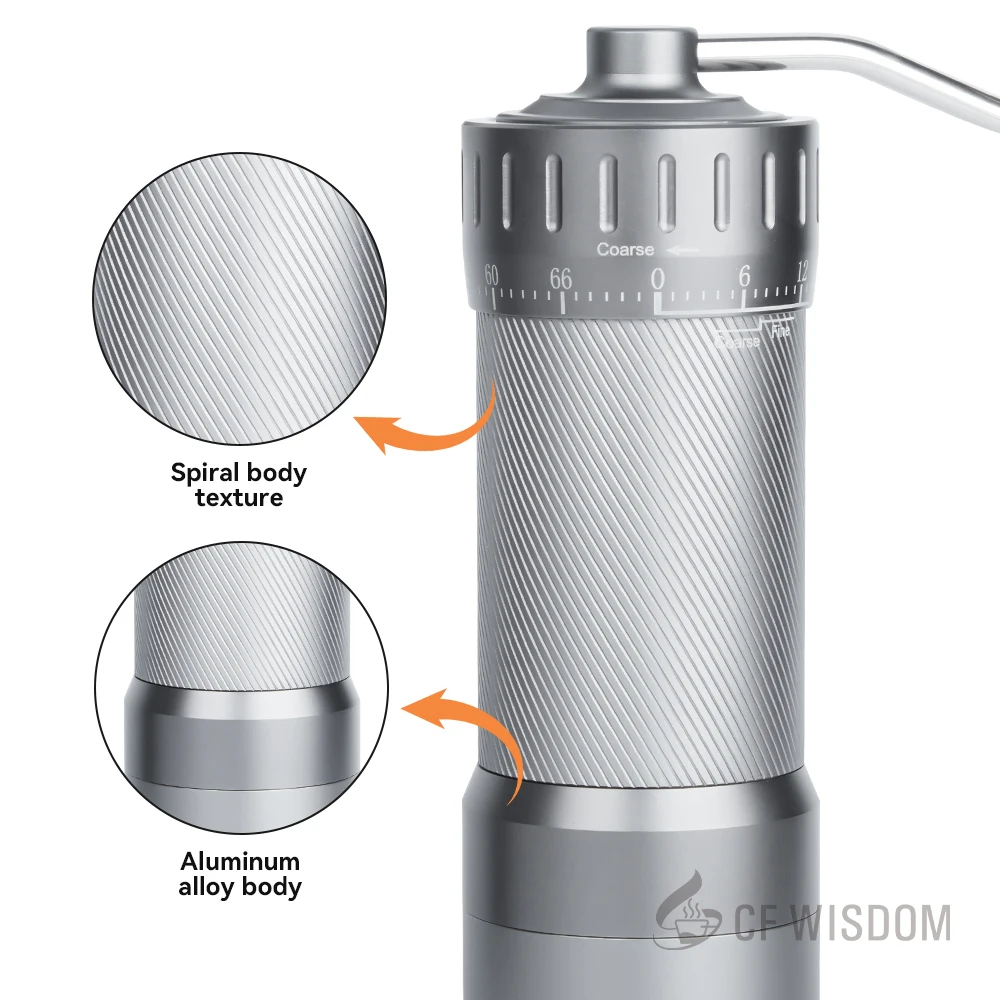
Even experienced baristas encounter extraction issues. Identifying whether problems stem from grind settings or other variables is key to consistent espresso quality. Here are solutions to the most common grind-related problems:
Inconsistent Shot Times
Problem: Sequential shots using the same grind setting extract at notably different speeds.
Solutions:
– Check for grinder retention—old grounds mixing with fresh ones
– Ensure consistent dosing using a scale (±0.1g precision)
– Verify temperature stability in your machine
– Look for clumping that might cause channeling
– Make sure distribution and tamping are consistent
Channeling and Uneven Extraction
Problem: Water finds paths of least resistance through the puck, leading to over-extraction in some areas and under-extraction in others.
Solutions:
– If using very fine grinds, slightly coarsen and focus on distribution
– Implement WDT (Weiss Distribution Technique) to break up clumps
– Ensure level tamping with consistent pressure
– Check for portafilter cleanliness—old coffee oils can create channeling
– Examine for grinder issues producing too many fines (very small particles)
“Choking” the Machine
Problem: Extremely slow extraction or no flow despite pump activation.
Solutions:
– Immediately adjust grinder significantly coarser
– Reduce dose slightly if grind adjustment alone doesn’t solve the issue
– Check for overfilling the basket, which restricts headspace
– Verify your grinder isn’t producing excessive fines
– Consider whether bean freshness (too fresh) is causing excessive blooming
Spraying and Messy Extractions
Problem: Coffee sprays or streams erratically from the portafilter.
Solutions:
– Usually indicates channeling—improve distribution
– Check for cracks in the puck from too hard tamping
– Ensure the portafilter is clean and properly locked in
– Examine the shower screen for clogs or uneven water distribution
Fast Initial Flow That Slows Dramatically
Problem: Extraction starts quickly but then nearly stops.
Solutions:
– Classic sign of fines migration—particles moving during extraction and clogging the bottom of the puck
– Adjust slightly coarser to reduce fines
– Improve distribution to create a more uniform density
– Consider whether your grinder produces an excessive amount of fines
Using manual espresso grinders with quality burrs often helps reduce issues related to inconsistent particle size distribution and excessive fines production. Their precise adjustment mechanisms also make it easier to make the incremental changes needed to resolve extraction problems.
Remember that diagnosis should always include tasting—visual symptoms can sometimes be misleading, but flavor doesn’t lie about extraction quality.
Grind Consistency: Maintenance Practices for Optimal Performance
Maintaining your grinder is essential for consistent espresso quality. Even the finest grinder will produce inconsistent results if not properly cared for. Regular maintenance ensures particle size consistency and extends equipment life.
Regular Cleaning Protocol
Establish a cleaning schedule based on your usage volume:
- Daily: Brush out the grinding chamber and burrs to remove coffee residue
- Weekly: More thorough cleaning of accessible parts
- Monthly: Deep cleaning including burr removal (if applicable to your model)
Coffee oils build up quickly, becoming rancid and affecting flavor. These oils also cause grounds to stick to burrs and chambers, creating inconsistency between shots.
Signs Your Burrs Need Attention
Watch for these indicators that maintenance or replacement is needed:
- Increasing inconsistency in shot times despite identical settings
- Visible burr wear such as chips, dents, or significant dulling
- Changed sound during grinding—rattling or different pitch
- More fines in your grounds, causing muddy shots
- Inability to achieve fine enough grind for proper extraction time
- Heating issues where the grinder gets unusually warm during operation
Quality burrs in regularly maintained grinders typically last for hundreds of pounds of coffee before needing replacement, though exact lifespan varies by material and design.
Calibration Practices
Many grinders benefit from periodic recalibration:
- Check zero-point calibration (where burrs just touch)
- Verify adjustment mechanism accuracy
- Ensure burrs remain parallel after cleaning and reassembly
Tools for Proper Maintenance
Keep these tools available for grinder maintenance:
- Soft brushes for removing grounds
- Compressed air (used carefully) for hard-to-reach areas
- Grinder-specific cleaning products that remove oils without harming parts
- Microfiber cloths for exterior cleaning
Maintaining manual coffee grinders is generally simpler than maintaining electric models, with fewer areas for coffee oils to accumulate and easier access to burrs. High-quality hand burr grinders often have simpler construction that facilitates thorough cleaning.
Regular maintenance not only ensures consistent performance but also protects your investment. A well-maintained grinder will provide years of reliable service, while neglected equipment may require premature replacement.
Beyond Grind Size: Complementary Factors for Perfect Extraction
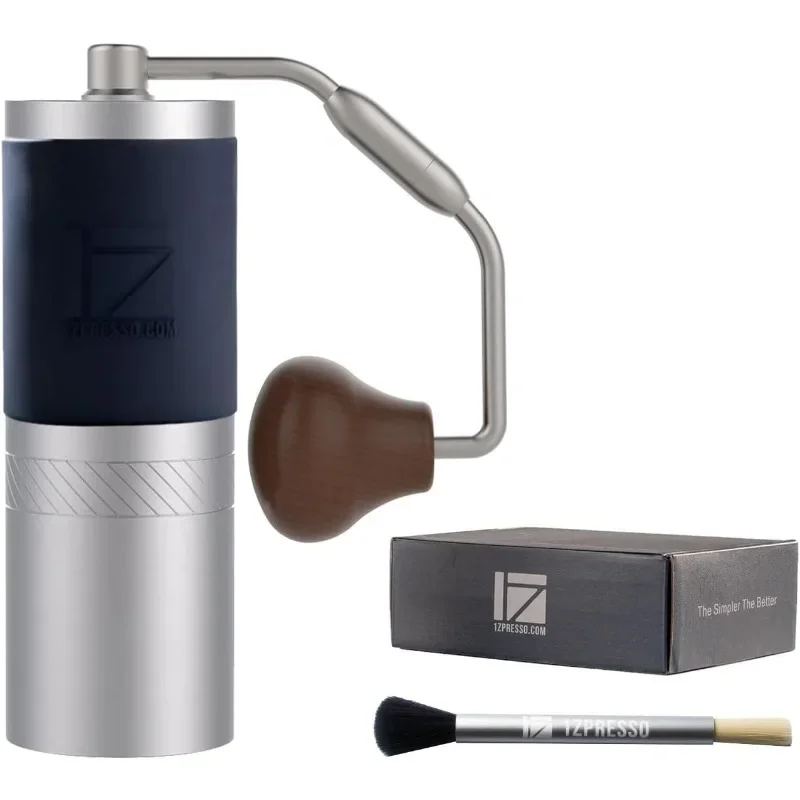
While grind size is fundamental to espresso quality, it exists within a web of interrelated variables. Understanding how these factors interact allows you to make more effective grind adjustments and achieve better overall results.
Dose and Its Relationship to Grinding
The amount of coffee you use (dose) directly affects how your grind setting performs:
- Increasing dose while maintaining grind size creates more resistance to water flow
- Higher doses typically require slightly coarser grinds to maintain similar flow rates
- Lower doses may need finer grinding to create adequate resistance
This relationship explains why many baristas prefer to standardize their dose (often 18g for a double shot) and adjust grind size as their primary variable.
Tamping Considerations
Tamping pressure and technique interact with grind size:
- Very fine grinds may require lighter tamping to avoid over-resistance
- Coarser grinds typically benefit from firmer tamping to create adequate resistance
- Uneven tamping can negate the benefits of perfect grinding by creating density variations
While traditional wisdom suggested 30 pounds of pressure, modern understanding emphasizes consistency over specific pressure. What matters most is applying the same pressure every time to make grind adjustments meaningful.
Water Quality and Mineral Content
Water composition significantly impacts extraction:
- Higher mineral content water (especially calcium and magnesium) extracts coffee compounds differently
- Soft water may require finer grinding to achieve adequate extraction
- Hard water often needs slightly coarser grinding to prevent over-extraction
The ideal water for espresso has approximately 75-150 ppm of total dissolved solids with a balanced ratio of calcium to magnesium and minimal chlorine.
Machine Pressure and Temperature
Your equipment’s characteristics necessitate specific grind adjustments:
- Machines that operate below traditional 9-bar pressure typically require finer grinding
- Higher brewing temperatures extract more efficiently, often needing coarser grinds
- Lower brewing temperatures extract more slowly, potentially requiring finer grinding
Products from our manual coffee grinder for espresso collection are designed to produce the consistency and precision needed to accommodate these interrelated factors.
Fine Adjustment Hand Grinder, Precision Manual Grinder, Travel Coffee Grinder
Price range: $185.11 through $494.63 Select options This product has multiple variants. The options may be chosen on the product pageHand Burr Grinder, Hand Crank Coffee Grinder, Manual Espresso Grinder, Portable Coffee Grinder
Price range: $262.72 through $300.22 Select options This product has multiple variants. The options may be chosen on the product pageManual Burr Mill, Manual Coffee Grinder Stainless Steel, Manual Coffee Mill Grinder, Mechanical Coffee Grinder
Price range: $127.26 through $130.32 Select options This product has multiple variants. The options may be chosen on the product pageHand Burr Grinder, Manual Coffee Grinder Stainless Steel, Precision Manual Grinder
Price range: $183.64 through $187.52 Select options This product has multiple variants. The options may be chosen on the product page
By understanding these complementary factors, you gain a more holistic view of espresso preparation. Rather than treating grind size as an isolated variable, you can make more informed adjustments that consider the complete extraction system.
Mastering Grind Adjustments Across Different Espresso Machines
Different espresso machine designs create distinct extraction environments that require specific grind approaches. Understanding these differences helps you adapt your grinding technique to your particular equipment.
Pump vs. Lever Machine Considerations
Pump-driven machines (the most common type) deliver consistent pressure throughout extraction, typically at 9 bars. They generally work best with:
– Very consistent grind size
– Traditional fine espresso grind
– Minimal grind adjustment between shots
Lever machines create a declining pressure profile as the spring decompresses or as manual pressure varies. They often require:
– Slightly coarser grinds than pump machines
– Adjustments based on lever pull technique
– More attention to grind distribution due to variable pressure
Pressure Profiling Capabilities
Modern machines with pressure profiling features open new possibilities:
- Declining pressure profiles often extract more evenly with standard espresso grinds
- Low-pressure pre-infusion allows for slightly finer grinding without choking the machine
- “Flow control” machines benefit from grinders capable of very precise adjustments
Basket Design Influences
The portafilter basket significantly impacts optimal grind:
- Precision baskets with evenly distributed holes require more consistent grinding
- Traditional baskets with fewer holes may be more forgiving of grind inconsistencies
- Deeper baskets typically work better with slightly coarser grinds than shallow ones
- “Precision” or competition baskets often require finer grinding than stock baskets
Adaptation Strategies for Different Machine Types
When switching between machines or upgrading equipment:
- Start with a finer grind than you think you need
- Adjust coarser in small increments
- Pay close attention to how quickly pressure builds (visible on machines with gauges)
- Consider how the machine’s group head design distributes water
Understanding grind adjustment beyond numeric indicators is especially important when working with different machines. The same “setting 5” on your grinder might produce perfect extraction on one machine but require significant adjustment on another.
By recognizing these machine-specific requirements, you can more quickly adapt your grinding approach when using different equipment, whether at home, visiting friends, or working in different coffee settings.
Specialty Techniques: Grinding for Signature Espresso Styles
Beyond standard espresso, various preparation styles require specific grind adjustments to achieve their distinctive characteristics. Mastering these variations allows you to explore the full range of espresso expressions.
Ristretto: Concentrated Intensity
Ristretto (restricted) shots use less water while maintaining the same coffee dose, creating a more concentrated extraction:
- Typically requires a finer grind than standard espresso
- Extraction ratio often around 1:1 (18g coffee to 18g beverage)
- Focus on early extraction compounds (sweeter, less bitter)
- May need slightly lower brewing temperature to avoid harsh extraction
Lungo/Allongé: Extended Extraction
Lungo (long) shots use more water than standard espresso:
- Generally needs a coarser grind to prevent over-extraction
- Extraction ratio typically 1:3 or higher
- Longer extraction time exposing different flavor compounds
- Often highlights acidity and complexity at the expense of body
Turbo Shots: Speed and Clarity
This modern approach uses higher brewing temperatures with coarser grinds:
- Significantly coarser grind than traditional espresso
- Very short extraction times (15-20 seconds)
- Higher brewing temperatures (often 200°F/93°C or higher)
- Can highlight clarity and brightness in light roasts
Traditional Italian vs. Modern Light-Roast Espresso
Different roast styles demand different grinding approaches:
- Traditional dark-roast Italian espresso works well with slightly coarser grinds that mitigate bitterness
- Modern light-roast espresso often requires finer grinding to achieve adequate extraction
- Single-origin espressos may need specific adaptations based on bean density and solubility
Signature Blend Customization
Many cafes develop signature blends optimized for specific grind profiles:
– Some emphasize body and crema with grind settings that enhance these qualities
– Others focus on clarity and distinction of origin characteristics through different grinding approaches
– Blend components may be chosen specifically for how they perform at certain grind sizes
Finding the perfect grind setting for espresso across these various styles requires experimentation and careful observation. The key is understanding the fundamental relationship between grind size, extraction time, and flavor development, then adapting these principles to achieve your desired style.
When to Start Over: Recognizing When Your Grinder Needs Replacement
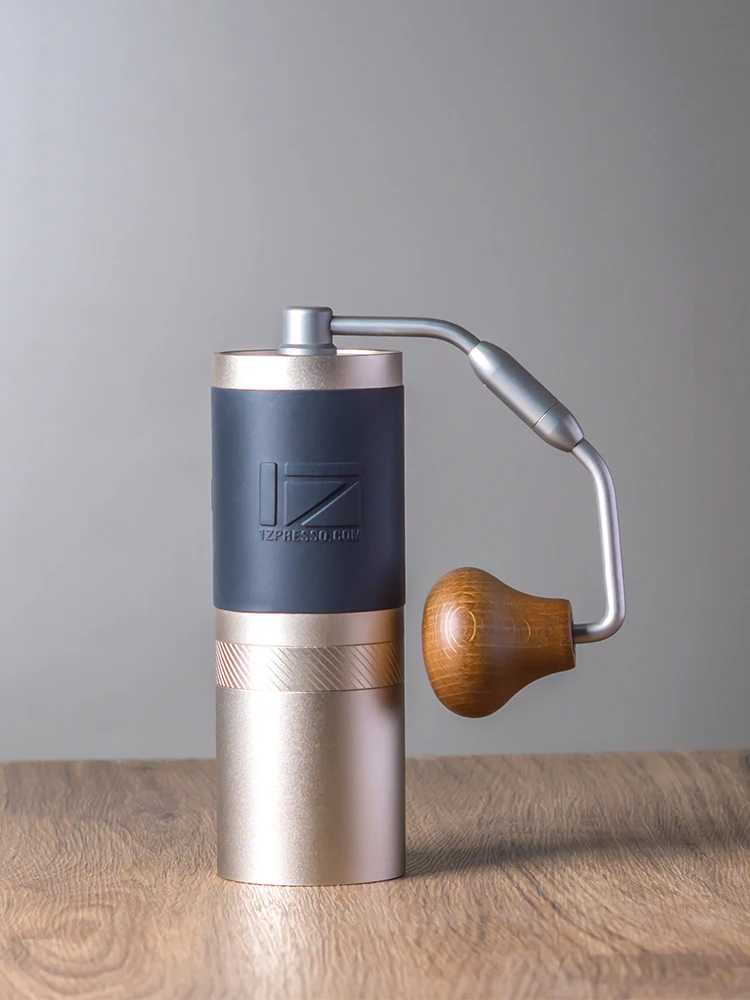
Even with proper maintenance, all grinders eventually reach their limits. Recognizing when issues stem from equipment limitations rather than technique problems can save you frustration and help you make informed upgrade decisions.
Signs Your Grinder Is Holding You Back
Watch for these indicators that your grinder has become the limiting factor:
- Persistent inconsistency despite proper maintenance and technique
- Inability to grind fine enough for proper espresso extraction
- Excessive heat generation during normal operation
- Significant particle size variation visible under magnification
- Declining adjustment precision where small changes produce unpredictable results
- Motor strain or stalling when grinding for espresso
Reasonable Expectations by Grinder Class
Understanding what to expect from different grinder categories helps set realistic expectations:
Entry-level burr grinders ($50-150): May struggle with true espresso fineness and consistency. Fine for pressurized portafilters but limiting for traditional espresso.
Mid-range burr grinders ($150-400): Should handle basic espresso needs but may lack the fine adjustment range needed for single-origin espresso or light roasts.
Prosumer grinders ($400+): Should provide the precision, consistency, and adjustment range needed for high-end espresso preparation across various coffee types.
Commercial grinders: Offer durability and consistency for high-volume use but may not always provide the fine adjustment capabilities of specialty prosumer models.
Calculating the Value of Upgrading
When considering a grinder upgrade, weigh these factors:
- How frequently you make espresso
- Whether flavor limitations are affecting your enjoyment
- The cost difference between your current and potential upgrade options
- Whether your current grinder works well for other brewing methods
- If inconsistency is causing you to waste coffee through failed shots
Quality stainless steel manual coffee grinders often provide exceptional value, delivering precision comparable to electric grinders costing much more. Their durable construction and precise adjustment mechanisms make them excellent options for espresso enthusiasts seeking maximum quality without the higher cost of premium electric grinders.
Remember that while technique can compensate for some equipment limitations, there comes a point where even perfect technique cannot overcome fundamental grinder constraints. If you’re consistently applying proper methods but still experiencing extraction issues, it may be time to consider an upgrade.
Key Takeaways: Your Espresso Grind Settings Mastery Plan
Mastering espresso grind settings is a journey that combines technical knowledge with practical experience. Here’s a condensed summary of the most critical points to guide your continuing pursuit of espresso excellence:
Grind size is foundational: No other variable can compensate for improper grinding. Investing in a quality grinder and mastering its use offers the highest return on investment for espresso quality.
Aim for consistency: Uniform particle size is as important as the size itself. Uneven particles lead to simultaneous under-extraction and over-extraction.
Develop a systematic approach: Make small, incremental adjustments and change only one variable at a time. Document your settings and results to build experience faster.
Read multiple indicators: Flow rate, timing, visual cues, and taste all provide feedback about extraction quality. Learn to interpret these signals together for the most accurate assessment.
Embrace adaptation: Different coffees, environmental conditions, and machine characteristics all require grind adjustments. Flexibility is essential for consistent results.
Maintain your equipment: Regular cleaning and proper care ensure consistent performance and extend the life of your grinder.
Trust your taste: While technical measurements provide guidance, flavor is the ultimate indicator of proper extraction. Develop your palate to recognize both under-extraction and over-extraction.
Practice deliberately: Each shot is an opportunity to refine your understanding and technique. Pay attention to the relationship between your adjustments and the results they produce.
Rather than viewing dialing-in as a chore, embrace it as an integral part of the espresso craft. The process of finding the perfect grind setting for each coffee is where you develop the skills and sensory awareness that distinguish exceptional baristas.
Remember that espresso preparation is both science and art. The technical precision of grinding creates the foundation, but your sensory perception and creative interpretation complete the experience. By mastering grind settings, you gain the fundamental control necessary to express the full potential of every coffee you brew.

